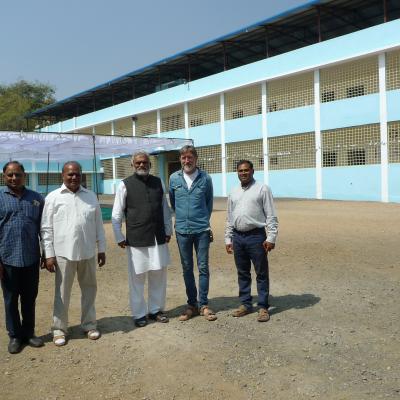We worked together with a native water seeker who found the best place:
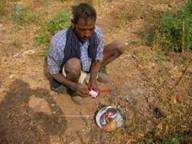 |
 |
 |
| Local water seeker at work (with the help of the 4 elements) | ||
To build a handpump well a pipeline has to be brought in the ground with a big drill. As soon as the water is reached, the pump can be installed and the well can be completed. These wells are about 70 to 100 meters deep and are suitable for drinking water, for cooking and for washing.
 |
 |
 |
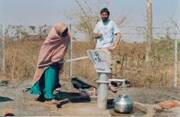 |
| Drilling machine | Drilling machine at work | First well with water! | Writing down name and owner |
The open wells combined with a diesel pump are suitable for the irrigation of the fields. These wells have a diameter from 7 to 10 meters and are about 12 meters deep. To build these wells around 20 villagers for work were needed. We gave them the usual day wage from 60 rupees (around two Swiss francs). Most of the workers were women who carried the rubble and big stones on their head from the shaft. When the ground was too rocky we had to use explosive charge. Usually the work was done by hand and without using any machines. This is in the interest of the village people, because they can get work and earn some money with the well work.
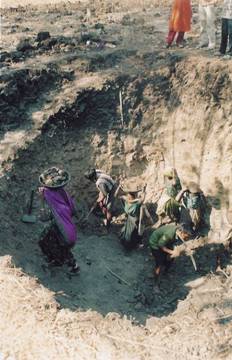 |
 |
| Work at an open well | Water is found… |
The best time to build wells is dry season between March and mid-June. If water can be found at this time the wells usually keep it during the whole year, provided that the following rainy season brings enough rain. In summer 2004 three diesel pumps could be provided for the completed wells and the results of the successful irrigation was astonishing.
 |
 |
| First finished open well in Mukumpura | Open well in Fathepura with diesel pump |
 |
 |
| Pipeline | Successfully watered field in Fathepura |
The category water contains also the repair of two dams which could be done thanks to donations. Again we employed villagers for the work and afterwards a very good and useful water reserve was given to them with these repaired dams. Of course it is vital that during the rainy season the lakes can collect a lot of water. On our visit in the following year we saw a remarkable improvement: In the former years the lakes were already dried up by the end of October. Now the lakes were filled with water until December. In addition more water could have been pumped from the lakes for irrigation of the fields than the years before. Also the pumping stations nearby gave water again due to the raised ground-water level.
 |
 |
 |
| Dam is leeking, unable to keep the water | Dam under repair | Dam closed with cement |
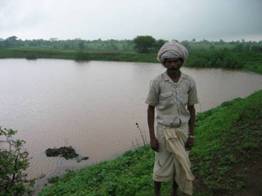 |
 |
| Chief Mesa in front of the finished dam | Filled lake in Amba during the rainy season |









